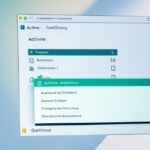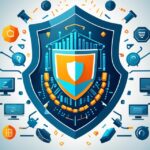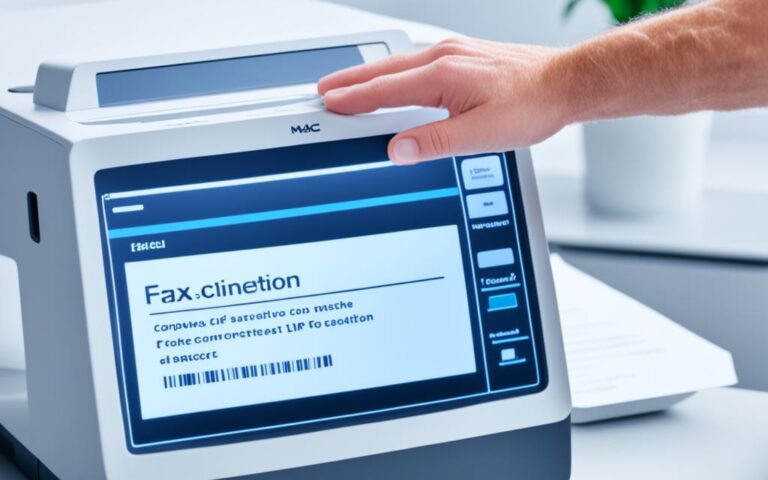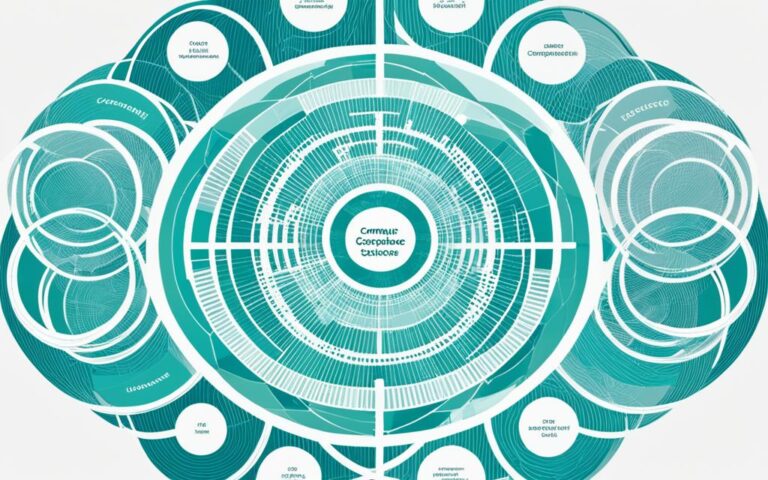To get to data on another computer from afar, several options are there. Using remote file server access is one. It lets users log into their computer from any place and change or remove files and apps1. This method helps those who need their home or office computer files while elsewhere. Also, many remote access tools exist. They provide various features to help with remote file access and control1.
Key Takeaways
- Remote file server access enables users to log into their computers remotely and manage files and applications from anywhere1.
- Various remote access tools are available to facilitate easy and secure access to files stored on remote computers1.
- Remote access allows individuals to work efficiently and access important data even when they are not physically present1.
- It is important to configure secure authentication methods, such as SSL/HTTPS and TrustedHosts, when accessing data remotely1.
- Utilizing PowerShell and its remoting features can enhance the efficiency of remote data. Management2.
Methods for Accessing Data Remotely
In today’s world, getting to data from afar is essential. Technology has evolved, offering different ways to access data remotely. Let’s look at some key methods:
- Cloud Storage Systems: Services like Google Workspace, Microsoft OneDrive, and Dropbox allow easy file sync across devices. You can store your work online safely. Then, access it anywhere there’s internet3.
- NAS Devices: Network-Attached Storage (NAS) devices offer a central place for your files. You can manage your data from anywhere online. It brings both flexibility and ease3.
- USB-Enabled Routers: These routers are a budget-friendly choice for accessing data remotely. Just connect a storage device to the router. It’s great for personal use on a smaller scale3.
- VPN Servers: VPN servers create a secure link for remote users to a company’s network. They’re crucial in industries like healthcare and finance. VPNs protect sensitive information while meeting strict privacy laws345.
- Remote Desktop Software: Tools like TeamViewer provide features such as remote printing and file transfer. They let users access computers far away, improving teamwork and efficiency3.
These methods let people and organizations access data from afar easily. They help in many fields, like healthcare, education, and law. Remote data access is now a key part of our global society3.
Best Practices for Remote Data Access
When dealing with remote data access, sticking to best practices is key. It’s essential to set clear telework and remote access policies. These outline what is expected from employees and how to keep data safe [link 1]. By doing this, everyone knows their duties and the right steps to secure important info.
6More than half of data breaches happen because of third parties. This shows how vital it is to have strong control over access and to manage vulnerabilities well [link 3]. Encrypting messages and private data adds extra protection. It stops unauthorized people from getting their hands on valuable data.
It’s also crucial to give remote workers special hardware. This keeps work and personal devices separate, which improves support and safety [link 2]. Regularly backing up data, both locally and remotely, ensures important files are safe. This is important for when things go wrong, like cyberattacks or data loss.
Staying up-to-date with security patches is essential. It helps close gaps that could let threats in. Updating all software and systems regularly and checking for vulnerabilities is a must. Using controls, like two-factor authentication and least privilege, reduces the chance of data breaches [link 2] [link 3]. These steps limit access to sensitive data, making it harder for breaches to happen.
FAQ
How can I access data from a remote computer?
To get data from a remote computer, you can use remote file server access. Remote access tools also let you log in remotely. You can edit and delete files from any place.
What are the methods for accessing data remotely?
Many methods exist for remote data access. You can use cloud storage like Google Workspace, Microsoft OneDrive, or Dropbox. There are also NAS devices, USB-enabled routers, VPN servers, and remote desktop software.
What are the best practices for remote data access?
For safe and efficient remote data access, start with clear remote work policies. Encrypt communications and protect sensitive data. It’s also wise to provide hardware for remote workers.
Make sure to regularly backup files and apply security updates. Implementing access controls and managing vulnerabilities is crucial too.
Source Links
- https://stackoverflow.com/questions/6587426/powershell-remoting-with-ip-address-as-target – Powershell remoting with ip-address as target
- https://learn.microsoft.com/en-us/powershell/scripting/security/remoting/running-remote-commands?view=powershell-7.4 – Running Remote Commands – PowerShell
- https://www.kaseya.com/blog/remote-access/ – What Is Remote Access and How Does It Work?
- https://www.realvnc.com/en/blog/remote-access/ – What is Remote Access and How Does it Work? | RealVNC
- https://www.techtarget.com/searchsecurity/definition/remote-access – What Is Remote Access? | Definition from TechTarget
- https://www.imprivata.com/blog/best-practices-third-party-vendor-access – Third-party vendor remote access best practices


















